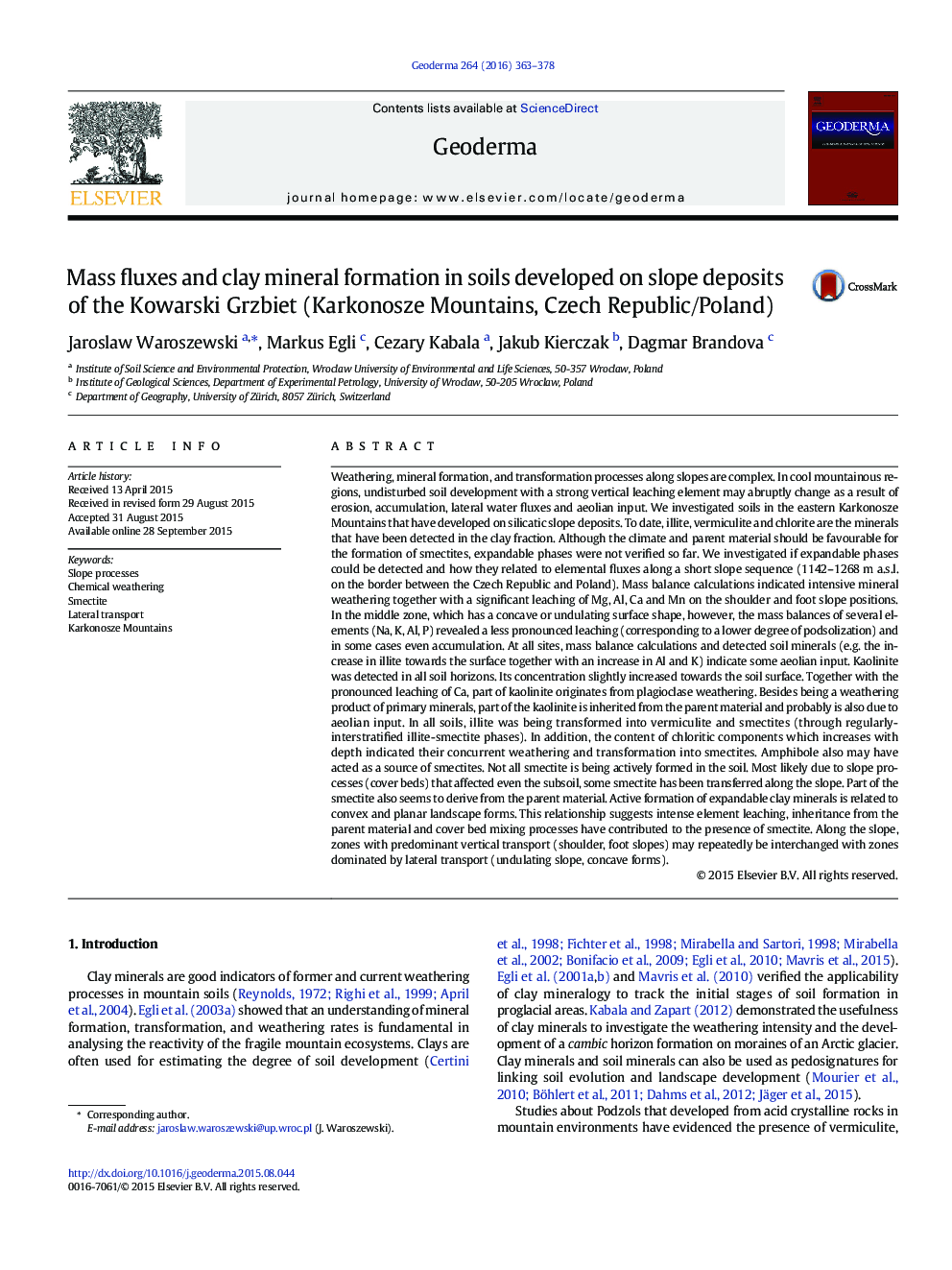| Article ID | Journal | Published Year | Pages | File Type |
|---|---|---|---|---|
| 4573115 | Geoderma | 2016 | 16 Pages |
•Smectites were detected for the first time in the Podzols of the Karkonosze Mountains.•Neoformation of smectites was related to convex and planar landscape forms.•Strong elemental leaching occurred at shoulder and foot slope positions.•Along the slope, zones with predominant vertical or lateral fluxes frequently change.•Some smectite is inherited or accumulated due to cover bed mixing processes.
Weathering, mineral formation, and transformation processes along slopes are complex. In cool mountainous regions, undisturbed soil development with a strong vertical leaching element may abruptly change as a result of erosion, accumulation, lateral water fluxes and aeolian input. We investigated soils in the eastern Karkonosze Mountains that have developed on silicatic slope deposits. To date, illite, vermiculite and chlorite are the minerals that have been detected in the clay fraction. Although the climate and parent material should be favourable for the formation of smectites, expandable phases were not verified so far. We investigated if expandable phases could be detected and how they related to elemental fluxes along a short slope sequence (1142–1268 m a.s.l. on the border between the Czech Republic and Poland). Mass balance calculations indicated intensive mineral weathering together with a significant leaching of Mg, Al, Ca and Mn on the shoulder and foot slope positions. In the middle zone, which has a concave or undulating surface shape, however, the mass balances of several elements (Na, K, Al, P) revealed a less pronounced leaching (corresponding to a lower degree of podsolization) and in some cases even accumulation. At all sites, mass balance calculations and detected soil minerals (e.g. the increase in illite towards the surface together with an increase in Al and K) indicate some aeolian input. Kaolinite was detected in all soil horizons. Its concentration slightly increased towards the soil surface. Together with the pronounced leaching of Ca, part of kaolinite originates from plagioclase weathering. Besides being a weathering product of primary minerals, part of the kaolinite is inherited from the parent material and probably is also due to aeolian input. In all soils, illite was being transformed into vermiculite and smectites (through regularly-interstratified illite-smectite phases). In addition, the content of chloritic components which increases with depth indicated their concurrent weathering and transformation into smectites. Amphibole also may have acted as a source of smectites. Not all smectite is being actively formed in the soil. Most likely due to slope processes (cover beds) that affected even the subsoil, some smectite has been transferred along the slope. Part of the smectite also seems to derive from the parent material. Active formation of expandable clay minerals is related to convex and planar landscape forms. This relationship suggests intense element leaching, inheritance from the parent material and cover bed mixing processes have contributed to the presence of smectite. Along the slope, zones with predominant vertical transport (shoulder, foot slopes) may repeatedly be interchanged with zones dominated by lateral transport (undulating slope, concave forms).
